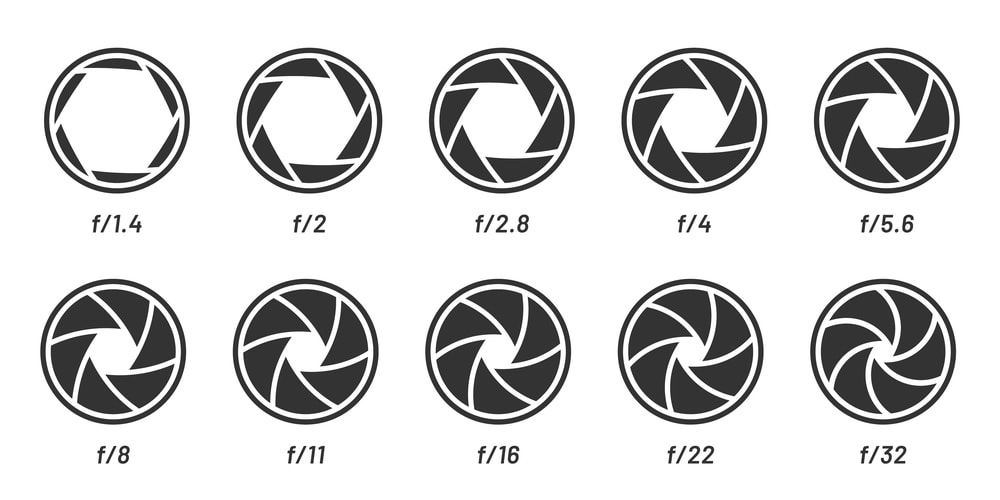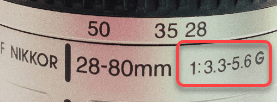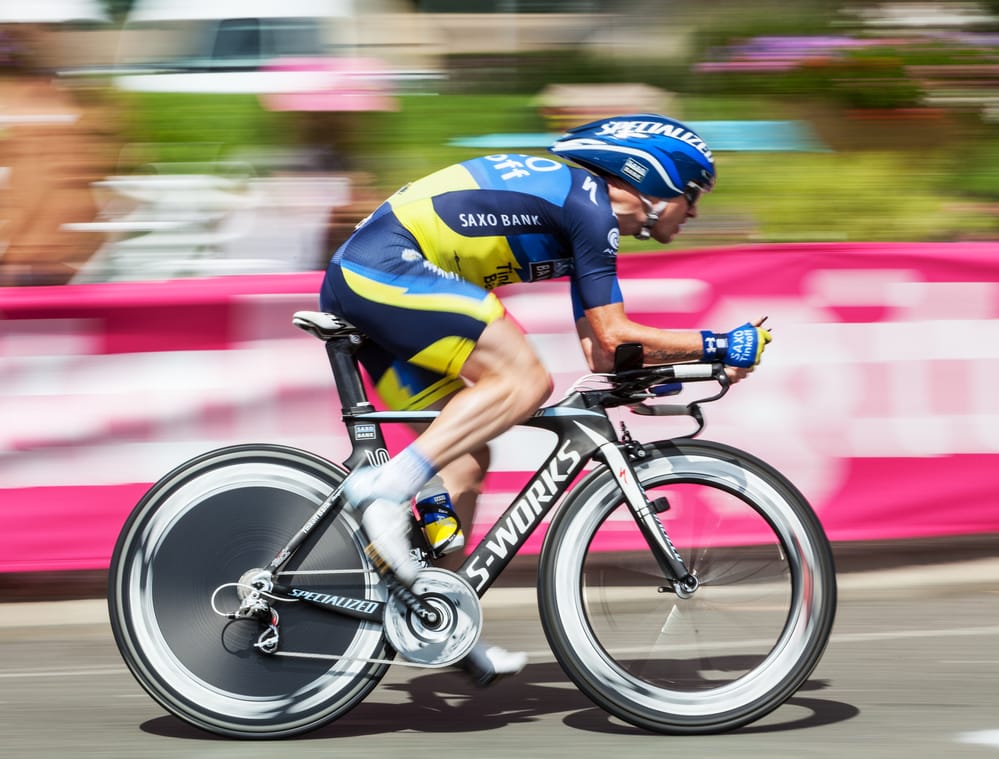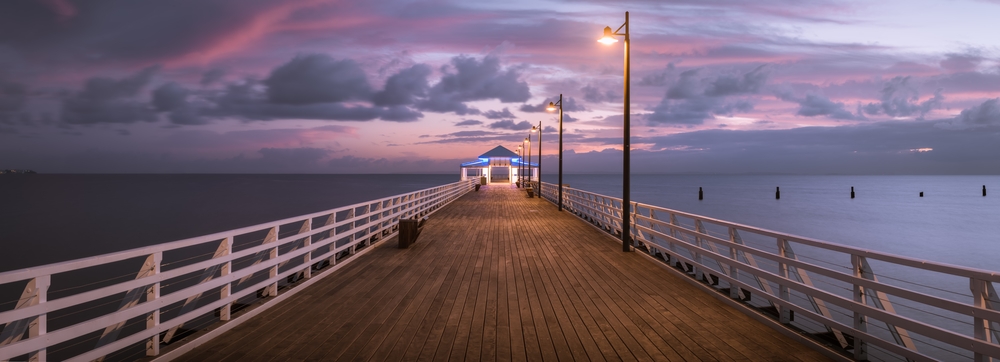The camera lens aperture is designed to allow you to control the amount of light that enters through your camera lens.
Sometimes we will want to let in a lot of light and sometimes just a little, depending on the scene and our needs.
You can think of the camera lens aperture just like the pupil in our eye – an open aperture is like an expanded pupil that lets in a lot of light and a closed aperture will look like a contracted pupil that lets in little light.
How is the Aperture Constructed?
The aperture is a system of blades that creates a diaphragm (ring) that ultimately determines the amount of light that enters.
The more blades there are in the aperture and the more rounded the blades are, the more rounded the shape of the aperture will be and the “Bokeh”, i.e. the blurring of the background, will be smoother and more pleasing to the eye.
Before you take a photo, the aperture will be completely open, this is so that you will be able to see something through the lens and so that it will be easy for the camera to focus on the subject.
In professional reflex cameras, it can be closed by pressing a small button located next to the lens in order to see the depth of field, and the visible image through the viewfinder will then darken.
During the photography session, a small lever located behind the bayonet (the screwing of the lens to the camera) lifts a small handle on the lens and closes the aperture according to your settings in the camera.
What is an Aperture Opening?
An aperture opening is used to control the amount of light that enters through the lens.
The size of the aperture is expressed as a ratio of the focal length to the diameter of the aperture. This ratio is also known as the f-number and is calculated using the formula F/x = The lens focal length divided by the diameter of the aperture.
For example, if you have a focal length of 200mm and your aperture is 50mm, then your aperture will be 200/50 = F/4.
If you will increase the diameter of the aperture to 100 mm (in that case, more light will enter), then your aperture key will be F/2.
Now, we can understand that F/2 lets more light in than F/4, meaning the ratio is a Reverse ratio. Meaning, the smaller the F-number, the larger the aperture, and more light will enter.
Following the same example – if you’ll increase the focal length to 400 mm and the aperture diameter remained 50 mm, what will happen to the aperture key?
It will become F/8.
From here, we can understand that increasing the focal length will result in a smaller aperture, as the aperture diameter will remain unchanged.
To maintain an aperture of F/4, we will need to increase the aperture diameter to 100 mm. In other words, the formula allows us to determine the relationship between these two variables.
What are the aperture stops?
During the shooting, we work with a number of fixed stops, called “f-stops”. These stops are:
F/1, F/1.4, F/2, F/2.8, F/4, F/5.6, F/8, F/11, F/16, F/22, F/32, F/45, F/64, F/90, F/128 etc.

(The values are rounded, to make them easier to write down and remember)
The meaning of the stops is that each stop, gives us double or half the amount of light.
Why the jumps in these numbers?
Each stop is a jump of approx. X1.41, which is equal to √2. when you reduce the diameter of the circle by √2, you will reduce the area of the circle by 2.
The Exposure Triangle
The aperture is not the only factor that affects your photography.
You have two more factors, the shutter speed, and the ISO.
That’s the reason it is called the “Exposure Triangle”.
How Does Aperture Affects Shutter Speed?
A lower f-stop number indicates a wider aperture, allowing more light into the lens and resulting in a shorter exposure time and faster shutter speed. The reverse is also true: using a higher f/stop number indicates a narrower aperture, allowing less light into the lens and necessitating a longer exposure time.
That’s why lenses with wide-open apertures are also called “fast lenses” because they let a lot of light in, and enable you to reach faster shutter speeds.
How Does Aperture and depth of field
One of the most obvious and well-known side effects of the aperture is the effect on the depth of field.
The more open the aperture, the shallower the depth of field (blurry background), and vice versa. A closed aperture will give you a deeper depth of field (more focused background).
The depth of field is affected by 3 additional factors and not only by the aperture.
- The Aperture Opening
- The Length From The Lens
- The Focal Length
How Does Aperture Affect the ISO?
A narrow aperture results in less light hitting the image sensor. This means that less light is available to create an image, so the image may appear darker.
To compensate for this, you may need to use a higher ISO setting.
This also happens in low-light situations.
The opposite is also true, shooting with a wide aperture, allows lots of light to enter through the lens, so, you can use a lower ISO in your settings.
How the Aperture Effects the Image Quality
Basically, the most extreme apertures of the lens, meaning the most open aperture, and the most closed aperture, harm the quality of the image.
The reason is the way the light refracts as it passes through the lens. A wide open aperture will usually lead to the darkening of corners (Vignetting) where the edges of the image are darker than the center, Chromatic Aberrations which create halos mainly around very contrasting and bright objects, lower sharpness which prevents us from getting the full details and a variety of other problems.
The most closed aperture of the lens will also reveal more serious problems, like soft images, soft foreground, blurred movements, and camera shakes.
Therefore it is recommended to avoid this area of the lens also.
Optimal aperture is the aperture key value at which the lens is sharpest. The rule of thumb says that the optimal aperture is 2 times the most open.
Meaning – closing two stops from the most open.
For example, in a lens with a maximum aperture of F/2.8, the optimal aperture will be F/5.6.
Note that this is a rule of thumb and there are always exceptions. one of the best ways to find out the qualities of your lens is to read reviews on photozone.de.
At the optimal aperture, you will discover amazing details and sharpness, so when it is important for you to get the most out of the lens, it would be good to close the aperture down a bit.
What is the maximum aperture of my lens?
It depends on the lens you have. The maximum aperture will be written on the lens. Usually, it will be written like this 1:2.8 or 1:3.5-5.6 where the “1:X” is equal to “F/x” and this is a different way of expressing the aperture key.
If you have two numbers written on the aperture key of the lens, as in most lenses on the market, it means that the lens has a different maximum aperture at each focal length, when at the smallest focal length the maximum aperture will be more open and at the maximum focal length, the aperture will be more closed.


As we saw in the examples above, if we increase the focal length without increasing the aperture diameter, our aperture key will be more closed.
For example, an 18-55mm F/3.5-5.6 lens will allow us an aperture of F/3.5 at 18 mm and a maximum aperture of F/5.6 at 55 mm.
You will see that only the maximum aperture is listed and not the minimum.
This is because usually it doesn’t interest people, and the main emphasis is on the open apertures.
With high-quality zoom lenses, you will have a constant maximum aperture for the entire length of the zoom, thanks to the special optical structure of the lens.
An example of such a lens is the 70-200mm F/2.8 where at any focal length you will be able to enjoy a maximum aperture of F/2.8.
These types of lenses are usually more expensive.
How to use the Aperture in photography
In which aperture will we choose to use?
It depends on the image you want to achieve and the lighting conditions.
Here are some common examples:
- Open aperture – Usually when we want to take portraits with a shallow depth of field or other objects where it is important for us to isolate the subject from the background.
Also, in sports photography when we want to use high shutter speeds in order to freeze the movement – the open aperture will allow us to achieve these high shutter speeds.
In low light conditions, an open aperture can save us from having to use flash or raise ISO. - Optimal aperture – Rule of thumb, closing the aperture in two stops will allow us to get the maximum sharpness out of the lens.
Usually, we will use it for landscape photography in which it is very important for us to extract all possible details, in portrait photography where we would like to get the pores of the skin and the details in the eyes of the subject, and in any type of scene where sharpness is extremely important. - Closed aperture – as we mentioned, the closed apertures lead to poor light refraction and a decrease in quality.
But we can still use the closed apertures in situations where it is important for us to achieve a deep depth of field and especially in macro shots, or when we want to have a slow shutter speed and enjoy spreading in panning shots (sharp subject and background with spreading of movement) or spreading of the waves in sunset shots.
Of course, there is no reason to reach for closed apertures if there is no smearing or a need for a deep depth of field.

Summary
The aperture is one of the most important tools in the camera.
It allows us to control the amount of light that enters through the lens and hence also to allow smearing or freezing in combination with the shutter speed, it allows us to improve the composition through control of the depth of field and greatly affects the quality of the final image.
Now that you’ve mastered your knowledge of the aperture, the goal is to master your aperture skills and improve the results of your photography.



